If I could recommend one recipe to a new sourdough baker, it would be this one. This sourdough discard focaccia is as simple and satisfying as it gets, a quick bake with no complicated shaping and all the delicious sourdough flavor.
Using a bit of commercial yeast speeds up proofing, so it's great practice for learning the signs of fermentation. Perfect for beginners or even experienced sourdough bakers who are short on time but still want delicious fresh bread.
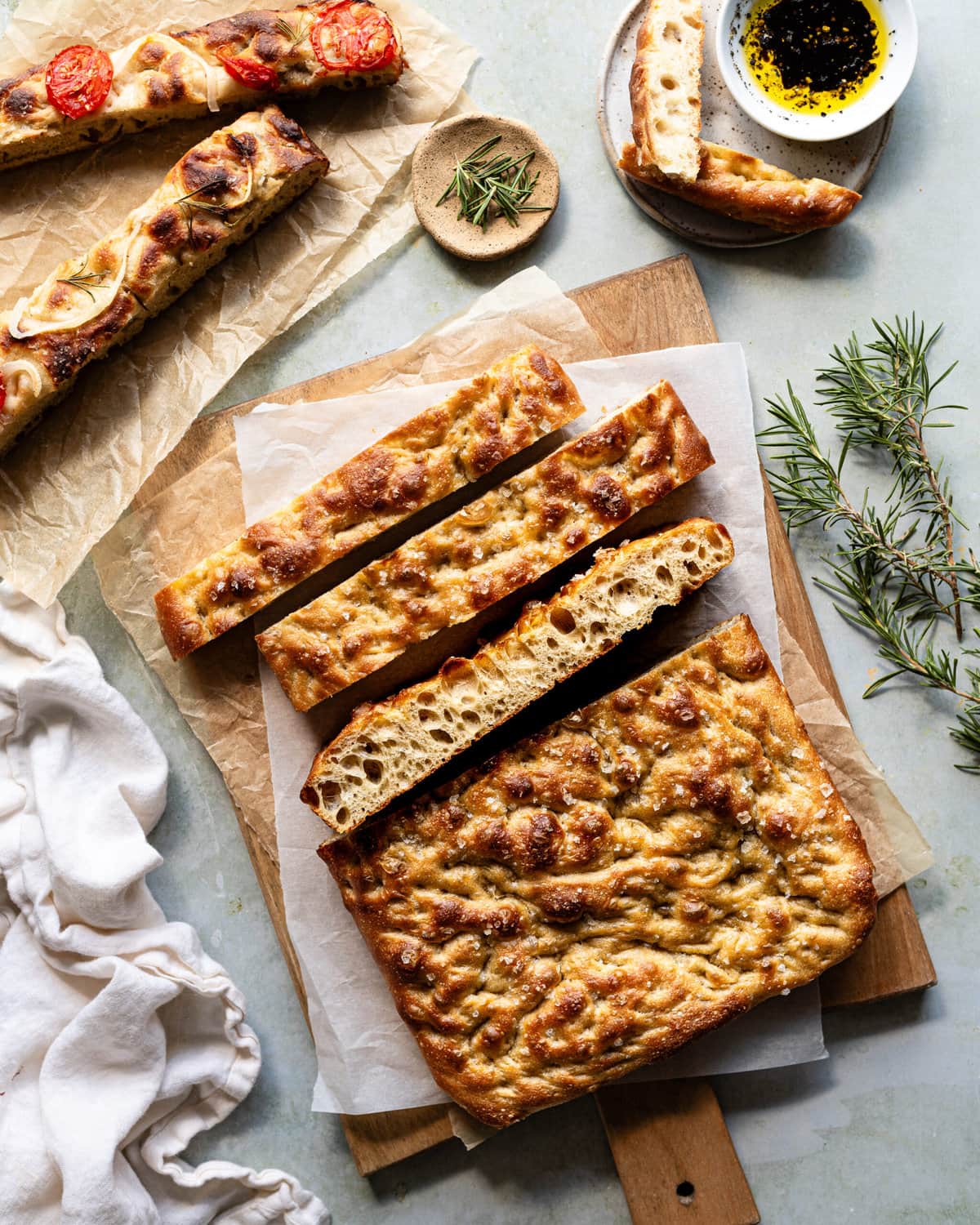
This recipe was originally published in Sept. 2023. I've since updated it to include clearer instructions and streamlined steps.
Absolutely phenomenal. I just got a starter last week so this was my first discard recipe and I am OBSESSED. The bread is pure perfection and I couldn’t be any happier with it. Keeping this recipe F O R E V E R!!!! Thank you!
- Amber
If you love flatbreads. Try my recipes for Sourdough Discard Flatbread and Sourdough Pita Bread.
Ingredients and substitutions
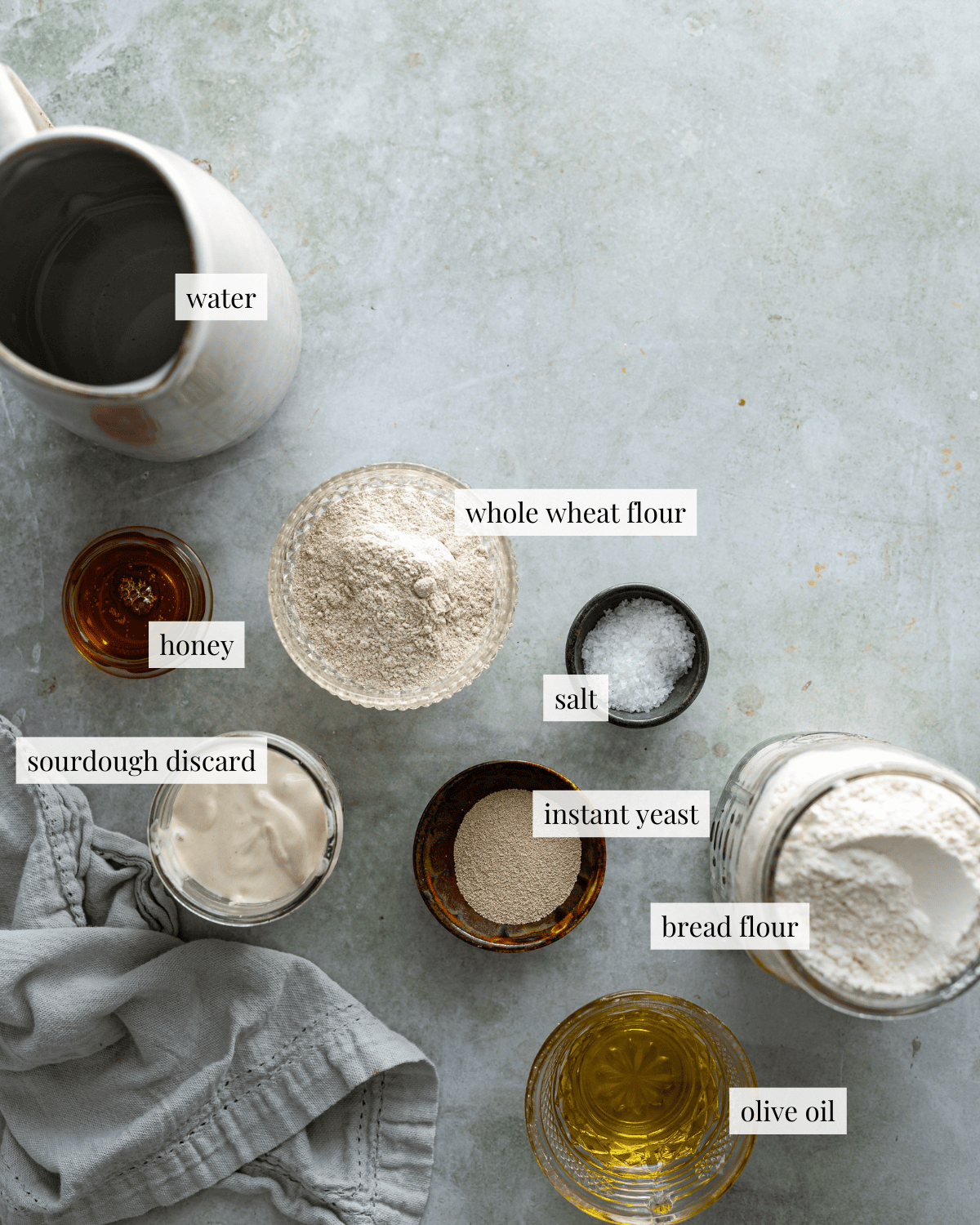
Flour: All-purpose flour will work in place of bread flour or whole wheat in this recipe. Don't attempt to use 100% whole wheat flour for this recipe or your focaccia may turn out dry and gummy.
Sourdough discard: You can use your starter directly from the fridge. If you don't have a starter, you can still make this recipe by adding 113 grams of flour and 113 grams of water to your dough.
Olive oil: Splurge on a high-quality olive oil. Unfortunately, there is no substitute for this ingredient.
See the recipe card for detailed ingredient information.
Tip
Commercial yeast has a shelf life. Make sure your active-dry yeast or instant yeast is still viable before attempting this recipe or your dough will not rise.

Topping variations
My favorite thing about focaccia is getting creative with the toppings! I like dividing my dough in half and baking my focaccia in quarter sheet pans so I can personalize each one with different ingredients.
Here's some of my faves!
- Olive oil and sea salt
- Tomatoes, garlic and fresh rosemary
- Kalamata olives and green olives
- Lemon, pecorino romano, onions and pink peppercorn
Step-by-step instructions
STEP 1 Make the dough
Whisk the yeast, honey and water together in a large bowl. Add the flour, salt and discard to the yeast mixture. Knead the olive oil into the dough. Transfer the dough into a clean, lightly-oiled bowl and let the dough rest.
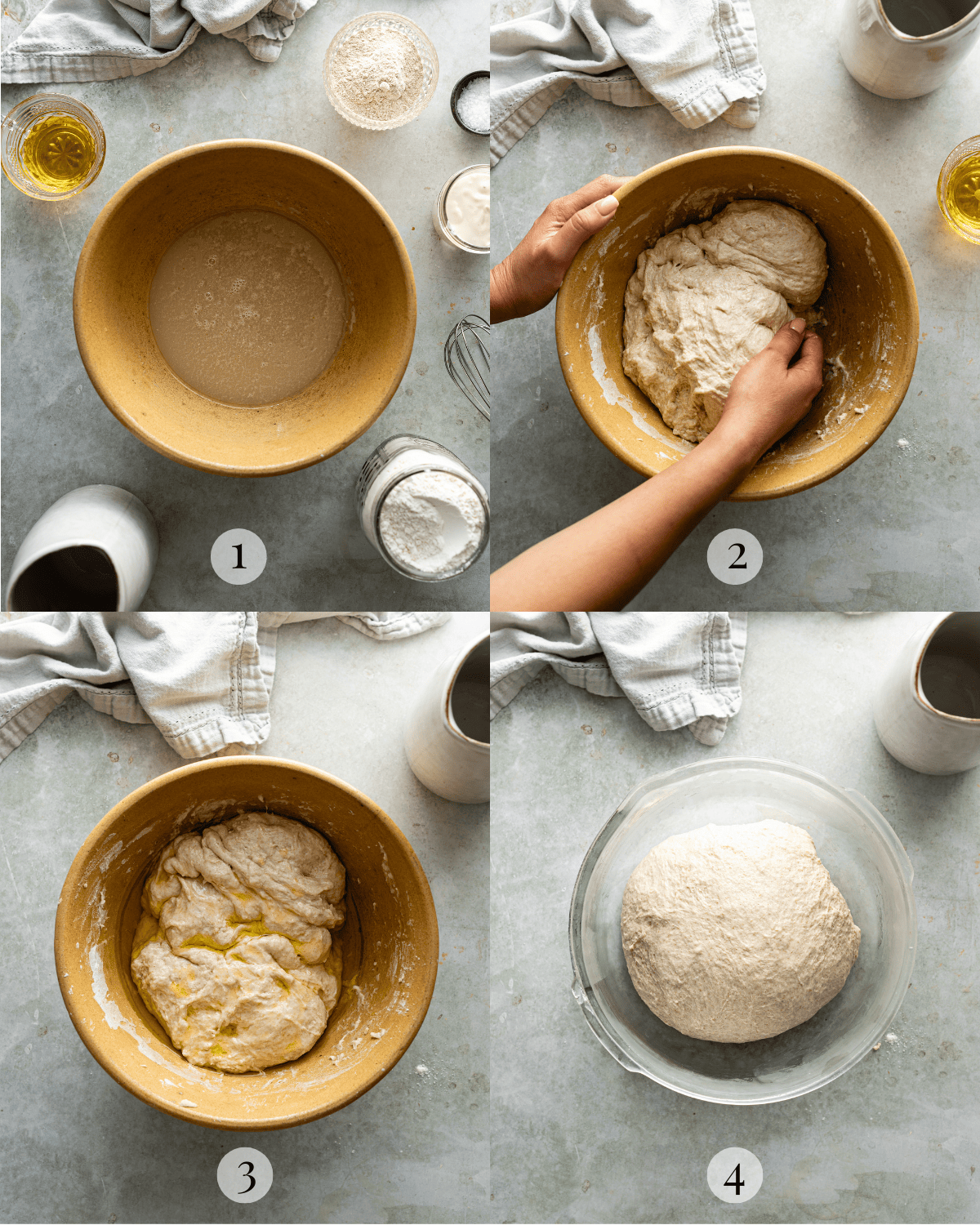
STEP 2 Stretch and fold
Using your fingertips pick up one side of the dough and stretch it as far as you can without tearing. Fold the dough over itself, turn the bowl 90 degrees, and repeat 3 more times or until all of the sides are folded.

Tip
This dough can initially feel quite wet and sticky. If it feels too difficult to handle, work with wet hands and use your fingertips to pick up and fold the dough.
STEP 3 Proof the dough
Cover the bowl and let the dough proof until bubbly and doubled in volume, about 30 to 45 minutes. Divide the dough and transfer to a baking sheet coated in olive oil, gently stretching it to reach the edges of the pan. Cover the pans until puffy and bubbly, about 30 minutes.

STEP 4 Bake
Dock the dough by using your fingertips to press on the surface multiple times until it reaches a consistently even thickness, then delicately stretch it towards the edges of the baking sheet. Sprinkle sea salt on top of the dough (add other toppings, if using) and bake at 425 for 25 to 30 minutes.

Bread Baking Tips
- Weigh your ingredients. Measuring with a scale is much more accurate than using cups and tablespoons, this will help guarantee your success.
- Coat the bottom of the pan with lots of olive oil. This fries the dough as it bakes resulting in a delicious crispy crust. It also prevents your dough from sticking to the bottom of your baking sheet!
- If the dough won't spread to the edges of your pan, cover it with a greased piece of plastic wrap and let it rest for 15 minutes before proceeding. This helps the gluten to relax, making the dough more pliable and easier to stretch.
- Don't use too many toppings or your focaccia may become soggy.
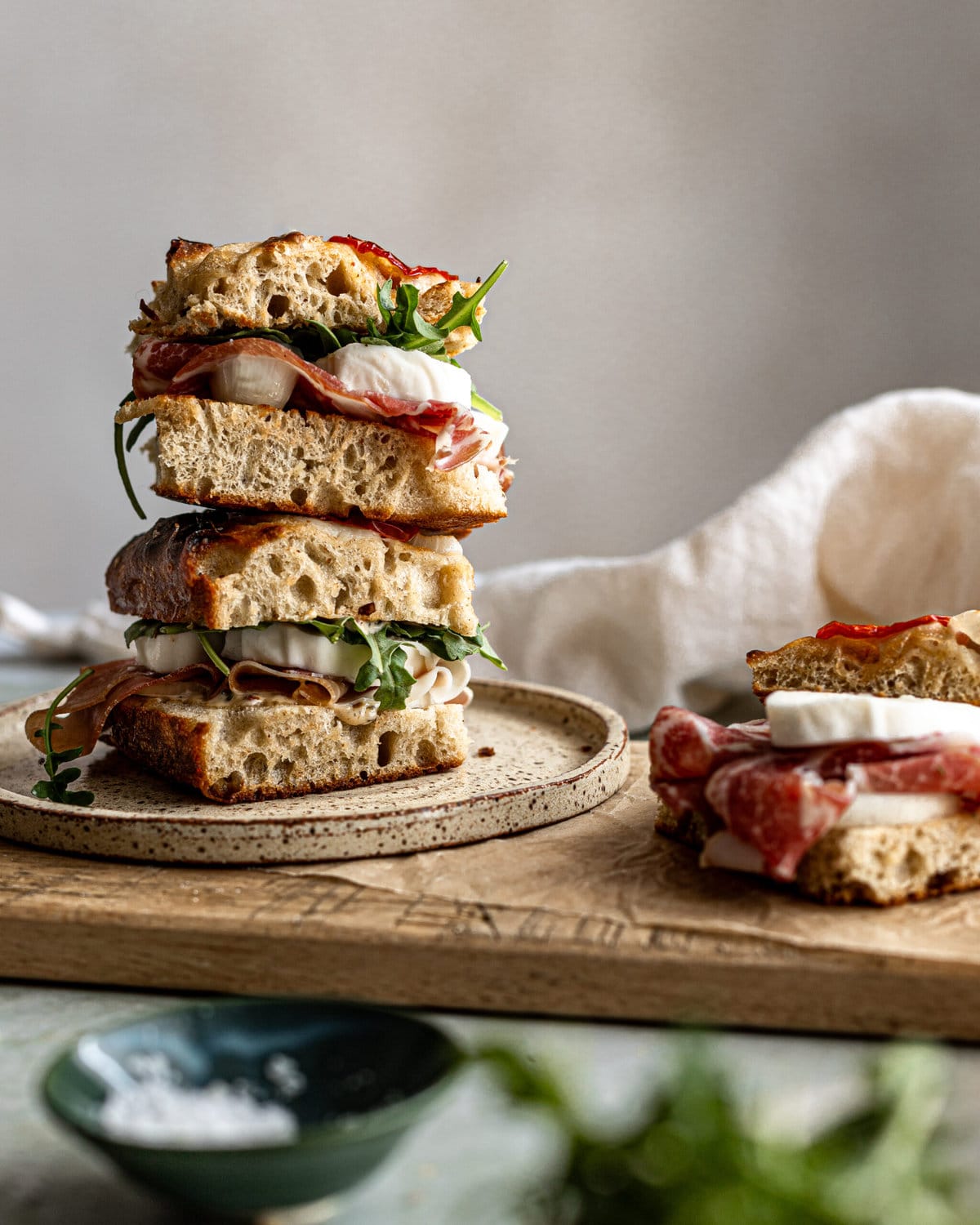
Recipe FAQs
This dough contains a lot of water about 75 percent. It’s completely normal for your dough to feel very sticky and difficult to handle right after it’s mixed. Allowing your dough to rest for 15 minutes after mixing will let the flour hydrate completely and the gluten to develop. The short rest periods between folds will make the dough less tacky and much easier to handle.
When folding, use wet or oiled hands and only use your fingertips to pick up your dough. This will prevent it from sticking to your hands.
There are a few reasons why your dough isn’t rising:
Your yeast is expired and can no longer make dough rise. If your yeast has been in your pantry for quite some time, activate it by mixing it with water and sugar first before mixing it in your dough. The mixture will look bubbly and smell yeasty if it’s still viable.
Your kitchen is too cold, cool temperatures will drastically slow down fermentation or the rate at which your dough rises. If your kitchen is too cold your dough will eventually rise, it may just take longer than the times cued in this recipe.
You used hot water and you may have killed your yeast. Water hotter than 115 F will kill yeast, if you accidentally add hot water to your yeast, start over.
You may not have added enough olive oil to the bottom of your pan. Add more oil than you think you need to make sure your dough doesn’t stick. For extra precaution, line your sheet pan with parchment paper or aluminum foil before adding olive oil.
Absolutely! You’ll need to bloom your yeast before making your dough. To activate your yeast, simply mix it with water and honey then wait 15 minutes until the yeast is bubbly.
Absolutely! Just use half of the recipe to make a smaller focaccia.
Sourdough discard will add a slight tang that will add to the flavor of your bread. The degree of sourness will depend largely on the acidity of your sourdough discard. This recipe was formulated so that the sourdough discard flavor will complement and not overpower the bake.
Did this recipe rise to the occasion?
★★★★★
Please leave a star rating and a comment. Your feedback helps me create more delicious sourdough recipes. I read and truly appreciate every message.
Don't forget to PIN this recipe on Pinterest to save it for later!
Thank you for your support!
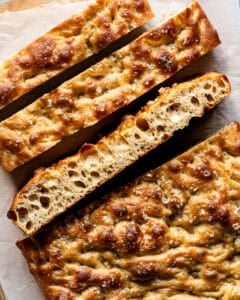
Sourdough Discard Focaccia Recipe
Equipment
This section may contain affiliate links
Ingredients
Dough
- 452 grams water
- 7 grams instant yeast 1 packet
- 42 grams honey or cane sugar
- 170 grams sourdough discard
- 540 grams bread flour
- 90 grams whole wheat flour
- 12 grams salt
- 56 grams olive oil
Toppings
- 56 grams olive oil
- 7 grams flaky sea salt
Suggested Toppings
- tomatoes sliced
- fresh rosemary
- onions sliced
- ground pistachios
- lemons sliced
- olives
- ground pepper
- garlic
- grapes
Click US Customary to view volume measurements
Instructions
- Make the dough: Mix the water, instant yeast, honey and sourdough discard in a large bowl until no traces of discard remains.452 grams water, 7 grams instant yeast, 42 grams honey, 170 grams sourdough discard
- Fold in the bread flour, whole wheat flour and salt. Mix with a wooden spoon or your hands until all of the flour is hydrated.540 grams bread flour, 90 grams whole wheat flour, 12 grams salt
- Knead the olive oil into the dough until it is absorbed. It will gradually feel less greasy as it absorbs the oil.56 grams olive oil
- Cover the bowl with plastic wrap and let the dough rest in a warm place for 15 minutes.
- Stretch and fold: After the 15 minute rest period, complete 1 set of stretch and folds.
- To complete a stretch and fold, with the dough inside your bowl, pick up the side of the dough closest to you using your fingertips. Stretch the dough out as much as you can without it tearing and fold it over itself. Turn the bowl 90 degrees and repeat 3 more times.
- Cover the bowl with plastic wrap. Set it in a warm place and let the dough rest for 15 minutes.
- Complete 1 more set of stretch and folds. Cover the bowl with plastic wrap.
- First rise: Let the dough rise at room temperature until doubled in volume. The dough should double in volume and appear bubbly, about 30 to 45 minutes.
- Prep: Line two 9 by 13 baking sheets aluminum foil or parchment paper. Coat the bottom of the sheet pans with about 1 tablespoon of olive oil (14 grams). Preheat the oven to 425 F. (Coat bottom of the pan with 28 grams of olive oil if you're baking 1 large focaccia)
- Second rise: Divide the dough into two portions. Transfer each portion of dough on the prepared pans. Cover the pans with plastic wrap and let the dough rest for 15 minutes.
- After the rest period, stretch the dough out to the edges of the pan. Cover the dough once more and let it rise for another 20 minutes or until it looks bubbly.
- Assemble and top: Working with one portion of dough at a time, pour about 1 tablespoon (14 grams) of olive oil over the dough. Spread the oil on the dough using the palm of your hand. Using your fingertips, dimple the dough all over until it looks completely flat.7 grams flaky sea salt
- Sprinkle sea salt and arrange toppings on the dough (if using). Repeat with the remaining portion of dough.
- Bake: Transfer the baking sheets to the oven and bake for 25 to 30 minutes or until the focaccia looks golden brown.
- Enjoy: Transfer the focaccias to a cooling rack. Let the bread cool for 10 minutes before slicing, more if you’re using it for a sandwich.
- Store: This bread tastes the best the day it is baked, but will store well for up to 3 days in an airtight container at room temperature. Refrigerate leftover slices in an airtight container if you used toppings.
Tips
These recipes were developed and tested using grams for precise measurements. To increase your chances of success, I recommend investing in a kitchen scale. I've included rough volume estimates (in tablespoons and cups), but they might not be totally accurate.
Remember all ovens are unique, these recipes were tested in my oven which runs cooler than others. You might need to lower the temperature if your bake appears to be browning too quickly. Monitor your bake closely and make adjustments if needed.
Notes
- two 9 by 13 baking pans
- one 18 by 13 inch baking sheet
- three 8-inch square baking pans
- three 9-inch cake pans
- two 12-inch skillets
Nutrition
I am not a nutritionist or dietitian, any nutrition information provided is an estimate.

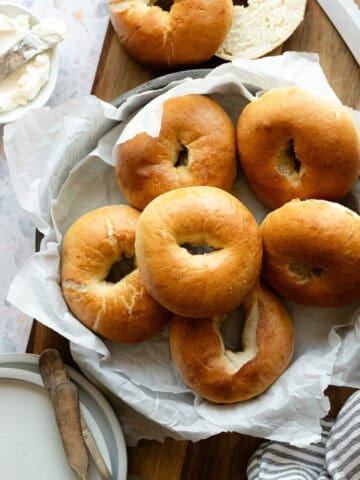
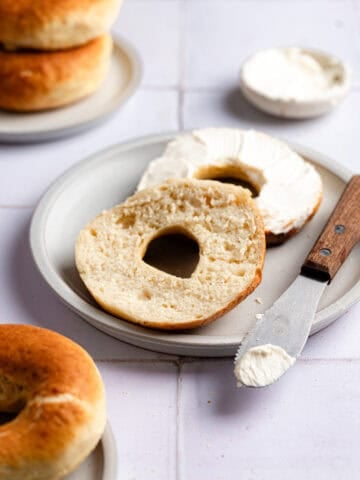
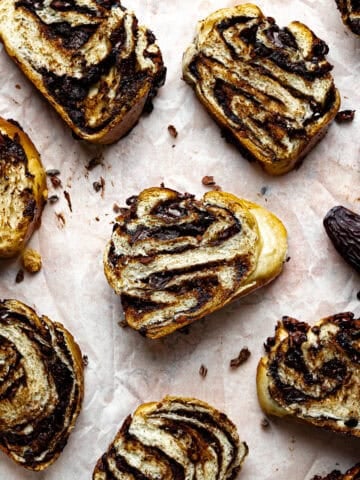
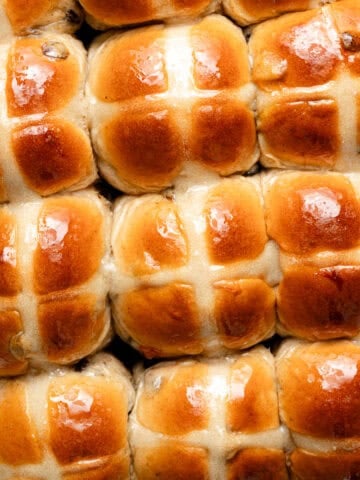
Carla says
Absolutely perfect! I will be making this on a regular basis. Thanks for such a great recipe.
Hannah Dela Cruz says
So thrilled that you love the recipe!
Cille says
I don't typically comment on recipes, but this one is too good not to.
I did changes, because my day suddenly changed and I needed more time so...
Instead of the second rise being 20 min, I put the dough in a cold-ish place (17°c) and let it rise for 4-5h.
After adding toppings I let it rise for another 30 min in a warm place.
Turned out so good. The recipe is very versatile and easy change up if needed.
I will definitely try the quick way though, when my day isn't cluttered haha
Hannah Dela Cruz says
This is so nice! Thank you for the great feedback.
Karen says
New sourdough baker here so please clarify:
"Line two 9 by 13 baking sheets aluminum foil or parchment paper. Coat the bottom of the sheet pans with about 1 tablespoon of olive oil "
So do I put oil in the pan and then the foil or parchment, or coat foil or parchment with oil, or do I not use foil or parchment if I'm oiling pan?
Thanks, eager to try this recipe!
Hannah Dela Cruz says
Hi! Add oil after you line the pan - the oil will basically fry the bottom of bread and make it deliciously crisp.
LANGFORD MARIA says
Been making this once a week for at least 3 months and it’s permanently open in my phone browser. It always comes out perfect. The only adjustment I make is I cover it after 20 minutes otherwise the top gets burnt
Hannah Dela Cruz says
Thank you for your feedback! I am so happy you love this recipe.
Beth Passantino says
Literally the best!! Great job and thanks for sharing. I’ve made this with cinnamon and sugar and a butter, garlic mixture. So good!
Hannah Dela Cruz says
I'm so glad you loved it! Also love these topping ideas!
Jenna says
Do I have to use whole wheat flour or can I use all bread flour?
Hannah Dela Cruz says
Absolutely! Substitute the same amount of bread flour or all purpose for the whole wheat.
Bridget says
Could you use the recipe to make a sweet breakfast focaccia?
Hannah Dela Cruz says
Absolutely! You can top this focaccia with any toppings of your choice.
Karen Moulton says
Could I use KA All-Purpose flour instead bread flour? Thank you.
Hannah Dela Cruz says
Yes!
Kimberly Rutledge says
Amazing discard recipe! My first time baking a focaccia, I was in a pinch and it turned out perfectly crispy on the outside, pillowy soft on the inside, and had wonderful air pockets. I looked like a seasoned sourdough baker! Everyone kept going back for more and making great comments!
Hannah Dela Cruz says
Hi Kimberly! This makes me so happy that you were the star of your get together. Thanks for making this bread and sharing it with everyone.
Annette S says
Can I make the dough the day before, refrigerate it overnight and then do the second raise the next day to help prep ahead of time but still bake fresh?
Hannah Dela Cruz says
Hi Annette! Yes - that should work just fine. Don't let the dough rise at room temp because it may overproof in the fridge. Good luck!
Leslie says
Best I have ever made! Delish! Made in one large pan but watch your heat and time, mine was done after 15-17 minutes!
Ellen Johnson says
I made a 1/2 recipe. It seemed to need extra flour but made a nice soft dough. Baking a t 425 for 25 min was either too hot or too long. The bottom was burnt. The top part was delish. I will try again with mods.
Hannah Dela Cruz says
I haven't tried using natural peanut butter for this, but because of its texture it may not work very well and your cookies make end up too crumbly. You could try running your peanut butter through the food processor or blender to make it smoother somehow. Again, I haven't tried this so I can't guarantee results. But, if I really wanted to use natural peanut butter for this recipe, this is what I would do.
Let me know if you try it!
Janae says
Have you tried to freeze the focaccia? Does it freeze well? I'm hoping to make ahead for a family event.
Hannah Dela Cruz says
I have not tried to freeze this particular bread! Focaccia is usually best eaten fresh since it's made with lots of oil.
Grace says
I’m confused…it says sourdough discard but then in the instructions u say to use active sourdough starter. When I think of active sourdough starter, I don’t think “discard”. I keep a jar of discard that I generally don’t feed and I wait until I have enough to make a “discard” recipe. Please clarify.
Hannah Dela Cruz says
Hi Grace - I can't seem to find what you're referring to. This recipe uses sourdough discard with active-dry yeast, a type of commercial yeast, for leavening. The only reference to active starter in this post is in the substitutions section where it states that you can use active starter in place of sourdough discard if you don't have any.
If you're still confused please don't hesitate to point out which section you are referring to.
Cheryl L says
This focaccia is DELICIOUS and easy! I used a Tuscan herb infused olive oil which gave the focaccia a wonderful flavor. (this was originally done by accident, but it was a delicious accident) Thank you for your recipe, I have shared it with my family.
Hannah Dela Cruz says
Oooh I bet the Tuscan oil made the focaccia taste extra special! So glad you loved the recipe.